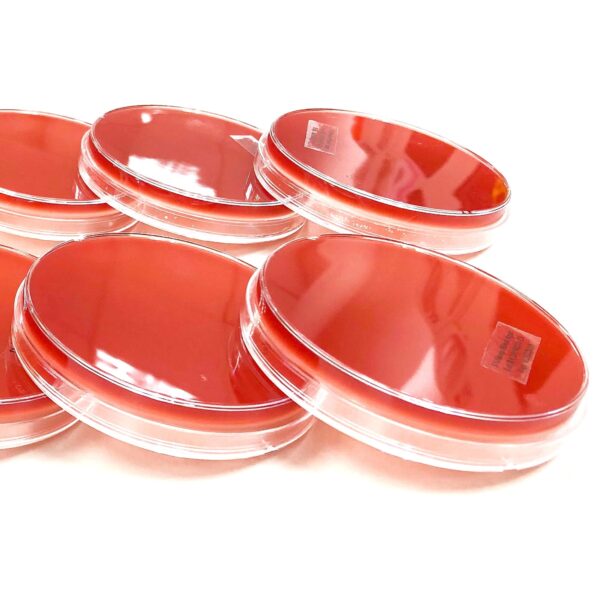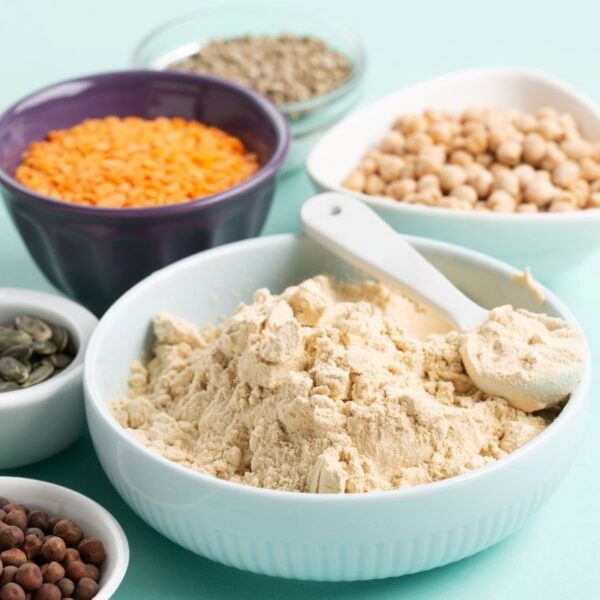Adipic acid is a dibasic carboxylic acid that occurs naturally in beetroot and sugarcane and is produced commercially through chemical synthesis. While it imparts a tart flavor, it has a relatively low acidity compared to other common food acids. Adipic acid is also used as a gelling aid, leavening, firming, and buffering agent.
What is Adipic Acid?
Adipic acid, also known as hexanedioic acid or acinetten, is an organic conjugate acid of an adipate with the formula (CH2)4(COOH)2. It is an α,ω-dicarboxylic acid and the 1,4-dicarboxy derivative of butane. “Adipic acid” originates from the Latin word adeps or adipis, meaning “animal fat.” The name alludes to the fact that it was historically prepared through the oxidation of various fats.
Chemical structure of adipic acid. Source: Wikipedia
How is Adipic Acid Produced?
Today, adipic acid is produced commercially by chemical synthesis. It involves the oxidation of cyclohexane in the presence of air to form a mixture of cyclohexanone and cyclohexanol, which is then oxidized with nitric acid to produce adipic acid.
Biocatalytic production of adipic acid from renewable feedstocks has also been reported using engineered Saccharomyces cerevisiae, Penicillium chrysogenum, Gluconobacter oxydans, and various other microorganisms. Additionally, multiple biocatalytic pathways have been explored for the microbial production of adipic acid, eliminating fossil fuel as a substrate for synthesizing adipic acid.
Use of Adipic Acid in the Food Industry
Adipic acid is a multipurpose food additive. Its functions include the following:
- Acidulant
- Flavoring agent
- Gelling aid
- Leavening agent
- Firming agent
- Buffering agent
Applications in the Food Industry
Adipic acid is a flexible food additive that imparts a tart taste, fizzy effect, and firm, gel-like texture. It is commonly added as the primary acid in bottled drinks. Adipic acid might also be found in fruit juice and gelatin, powdered food and drink mixes, imitation flavor extracts, dairy products, tart condiments, and throat lozenges.
| Function | Applications |
| Acidulant | Carbonated Beverages, Still Beverages, Milk-Based Beverages, Fruit Juices, Candies, Chewing Gums, Soft Chews, Hard-Boiled Powdered Beverages, Powder Mixes, Jams, Jellies, Squash, Marmalades |
| Flavoring Agent/Enhancer | Carbonated Beverages, Still Beverages, Milk-Based Beverages, Fruit Juices, Candies, Chewing Gums, Soft Chews, Hard-Boiled Powdered Beverages, Powder Mixes, Jams, Jellies, Squash, Marmalades |
| Gelling Aid | Jams, Jellies, Squash, Marmalades |
| pH Regulator | Candies, Chewing Gums, Soft Chews, Hard Boiled Candies |
| Leavening Agent | Cake, Cookies |
Properties of Adipic Acid
| Physical Form | Crystalline powder |
| Molar Mass | 146.14 g/mol |
| Melting Point | 151.5°C |
| Density | 1.360 g/cc |
| Appearance | Colorless to white crystalline powder |
| Solubility (10°C) | 1.4 g/100 mL in water |
| pKa | pKa1 = 4.43pKa2 = 5.41 |
| pH (0.1% aqueous) | 3.2 |
| Vapor Pressure (25°C) | 2.27X10-7 mm Hg |
Typical Formulations
Gelatin Jelly Dessert
Here is an example of a gelatin jelly dessert formulation table with adipic acid.
| Ingredient | Composition |
| Sugar | 80% |
| Gelatin | 10% |
| Trisodium Citrate | 0.8% |
| Flavor | 1.0% |
| Adipic Acid | 1.95% |
| Fumaric Acid | 1.05% |
Source: Google Patents
Cake Premix
Here is an example of a cake premix formulation table with adipic acid.
| Ingredient | Composition |
| Flour | 13.20% |
| Starch | 9.0% |
| Dehydrated Egg Whites | 10.0% |
| Sugar | 63.0% |
| Salt | 0.3% |
| Adipic Acid | 0.45% |
| Glucono Delta Lactone | 2.05% |
| Sodium Bicarbonate | 1.5% |
Source: Google Patents
Adipic Acid Formulation Considerations
| Stability | Decomposition > 230°CLight, pH & oxidation stable |
| Sensory Attributes | Taste: Slightly sweet to acidic taste, tart flavor Odor: Odorless Color: Colorless to white |
| Solubility | pH: Strong buffering capacity in the pH range 2.5–3.0 Shelf life: Reduces pH of food product leading to enhanced shelf life physical properties: Enhances the mechanical and thermal stability of natural polymers |
| Effect on Properties of Food | pH: Strong buffering capacity in the pH range 2.5–3.0 Shelf life: Reduces pH of food product leading to enhanced shelf life Physical properties: Enhances the mechanical and thermal stability of natural polymers |
Acetic acid is another organic acid commonly found in various food products.
Comparison with Other Acidulants
Aqueous solutions of adipic acid are the least acidic of all food acidulants. It does not have any unique antimicrobial properties other than a pH effect. This acid would most likely affect microorganisms susceptible to low pH levels.
Adipic acid is slightly more tart than citric acid at any pH, and its tartness lingers. It complements grape-flavored products and those with delicate flavors. Because of its low moisture absorption rate (unlike tartaric acid) is especially useful in dry products such as powdered mixes.
It can substitute for tartaric acid and cream of tartar due to its non-hygroscopicity.
Safety & Regulatory Considerations
| FDA Information | The FDA approves using adipic acid as a flavoring agent, leavening agent, and pH control agent. It can be used in food at levels not to exceed good manufacturing practices. |
| EU Information | The EU approves adipic acid as a food additive with number E 355. |
| Other Regulatory Information | According to FAO/WHO, the use of adipic acid in food products is limited to a level of 0-5 mg/kg body weight daily on a free acid basis. |
Identification Numbers
| CAS Number | 124-04-9 |
| EC Number | 204-673-3 |
| E No. (Food Additive) | E 355 |
| INS No. (Food Additive) | INS 355 |
| JECFA Number | 623 |
Acceptable Limits or Maximum Usage
The maximum usage level of adipic acid in food products per the FDA is as follows.
| Category | Maximum Level (%) |
| Baked Goods | 0.05 |
| Non-Alcoholic beverages | 0.005 |
| Condiments & Relishes | 5.0 |
| Dairy Product Analogs | 0.45 |
| Fats & Oils | 0.3 |
Source: FDA
Fun Facts About Adipic Acid
- Almost 90% of adipic acid produced is used in the production of nylon 66.
- Adipic acid is one of the most used chemicals in the world today.






